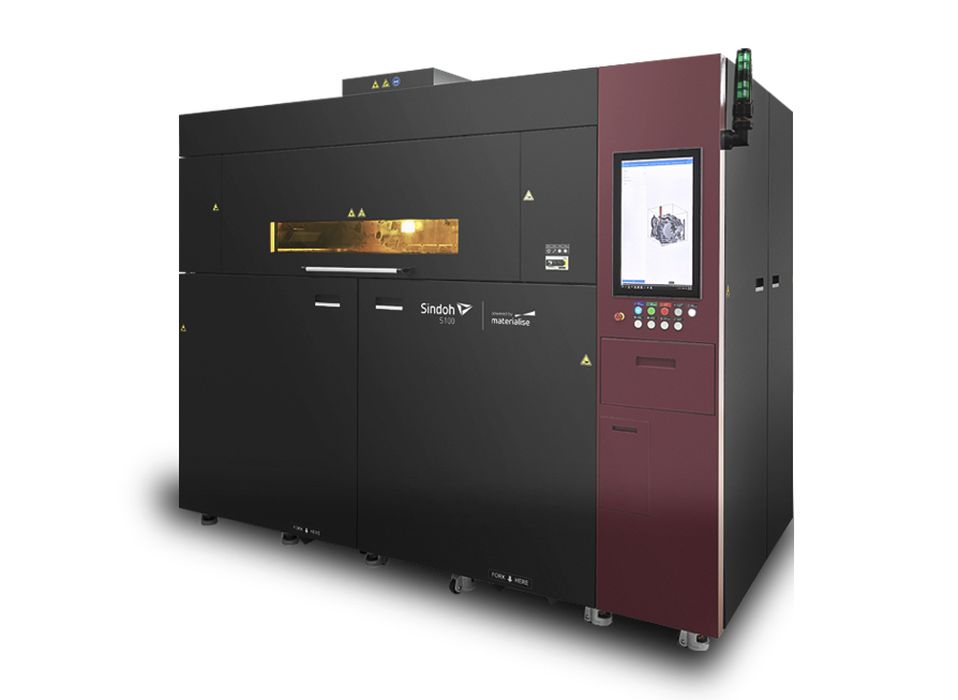
One of the more interesting but less well-known 3D printer manufactures is Sindoh.
The South Korean company is probably best known for its photocopier business, which started long ago in 1960. From photocopiers, the company branched out into other products over the years, including fax machines, thermal paper, and office multifunction printers.
But in 2016, they ventured into an entirely new area, 3D printing. With the launch of the then-amazing DP200, they changed how people viewed 3D printers.
At the time desktop — and industrial — 3D printers generally had rather poor interfaces. The typical desktop unit of the time had a very small LCD panel readout of digits and letters.
Sindoh changed things by bringing the interface styles they’d previously perfected for photocopiers. I was quite amazed seeing the smooth, color icons on the DP200 interface, and realized that every desktop 3D printer — and industrial unit too — should have far easier interfaces.
The DP200 was a FFF device, and while it was very easy to use it didn’t prove as popular as I expected, likely because the unit required proprietary cartridges. Even though they were reasonably priced, the prospect of being tied to a manufacturer for materials was something few desired.
Sindoh then introduced the rather good 3DWox machine, which provided an ability to use open materials as well as proprietary cartridges. The 3DWox One remains one of my favorite devices to this day.
While their initial equipment used single extruders, the company added a dual extrusion device, the 3DWox 2X. This allowed the use of soluble support or dual materials, and took the company’s clients into more interesting capabilities.
Soon afterwards, however, there was a veritable explosion of different devices from Sindoh, including:
- Larger format devices like the 7X and then 30X
- Resin machines like the A1+ and A1SD
What’s notable is that these machines use multiple 3D printing processes: FFF, SLA and LCD.
Then, earlier this year the company introduced yet another 3D printing process: SLS. The powder process appears on the company’s very first true industrial 3D printer, the S100.
The S100 is quite large compared to the company’s modestly-sized original desktop units, as it has a massive build volume of 510 x 510 x 500 mm, and uses dual 100W CO2 lasers that can scan at up to 15m per second. In total, the S100 can 3D print 4.7L per hour.
The materials used on the S100 are quite interesting, as they don’t just use the normal nylon powders. The S100 is a fully open materials device, about as far away from their original proprietary materials strategy as possible.
Even more interesting is that they’ve signed up with Materialise to offer that provider’s unique Bluesint PA12 material. The Bluesint system offers the possibility of 100% reuse of powder, which is significantly different from most SLS systems that can only use up to 50% recycled powder or less.
That capability can potentially reduce the cost of printing objects significantly, as less net material would be used. A manufacturer could then offer parts at costs lower than competitors, or at the same price and take more profit.
The S100 is also able to 3D print PA11, TPU and PP materials.
At this point we see a Sindoh utterly different than was seen back in 2016. Only five years later they offer eight 3D printers, ranging from hobbyist level, to professional use, to industrial production. That’s quite a transformation.
There’s a reason for this, and it’s one that’s been seen in several other 3D printer manufacturers. It turns out that the market for inexpensive 3D printers is extraordinarily competitive, with a race to the bottom in full force. It’s essentially impossible for a startup to compete with the low-cost vendors at this point, unless there is some type of unusual technology that offers vastly greater function.
For that reason many manufacturers of desktop equipment have slowly moved towards the professional and industrial markets. There, these companies will find profitable opportunities to market their products for the foreseeable future.
Ultimaker, Stratasys and many others have made that jump. Now, Sindoh is with them.
Via Sindoh
